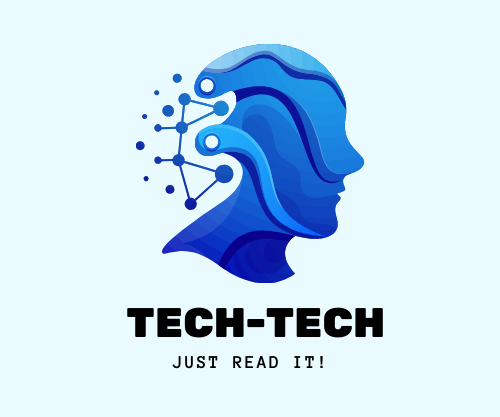Docker has revolutionized software development by enabling lightweight, portable, and consistent application deployment through containerization. For software engineers, understanding Docker is critical not only for day-to-day tasks but also for excelling in technical interviews. This guide consolidates essential Docker concepts, commands, and best practices into a structured format tailored for interview preparation.
1. Introduction to Docker
What is Docker?
Docker is an open-source platform that automates application deployment using containers—lightweight, isolated environments that package code, dependencies, and configurations. Containers share the host OS kernel, making them faster and more resource-efficient than virtual machines (VMs).
Why Docker?
- Portability: Run consistently across environments (dev, test, production).
- Efficiency: Reduced overhead compared to VMs.
- Scalability: Easily replicate containers for horizontal scaling.
- Isolation: Processes and resources are segregated between containers.
Key Components of Docker
- Docker Engine: Core service managing containers, images, networks, and volumes.
- Docker Images: Immutable templates (e.g.,
nginx:latest) used to create containers. - Docker Containers: Runtime instances of images.
- Docker Hub: Public registry for sharing images.
- Docker Volumes: Persistent storage for container data.
2. Core Concepts
Docker Image vs. Container
| Image | Container |
|---|---|
| Static template (read-only) | Runtime instance (read-write) |
Built via docker build | Started via docker run |
Example: ubuntu:20.04 | Running Ubuntu instance |
Dockerfile
A text file with instructions to automate image creation:
dockerfile
FROM alpine:latest RUN apk add --no-cache nginx COPY index.html /var/www/html/ CMD ["nginx", "-g", "daemon off;"]
Key Instructions:
FROM: Base image.RUN: Execute commands during build.COPY: Add files from host to image.CMD: Default command to run.
Docker Hub
- Pull an image:
docker pull nginx:latest - Push an image:
docker push username/repo:tag
3. Managing Images and Containers
Essential Commands
- Build an image:bashCopydocker build -t my-app:1.0 .
- List images/containers:bashCopydocker images # List images docker ps -a # List all containers
- Start/stop containers:bashCopydocker run -d -p 8080:80 nginx # Create and start docker start <container-id> # Restart stopped container
- Delete resources:bashCopydocker rmi <image-id> # Remove image docker rm <container-id> # Remove container
Lifecycle of a Container
- Create:
docker create - Start:
docker start - Stop:
docker stop(graceful) ordocker kill(forceful) - Remove:
docker rm
4. Docker Networking
Network Types
- Bridge: Default network for inter-container communication.
- Host: Shares host’s network stack (no isolation).
- Overlay: Connects containers across multiple hosts (e.g., Swarm).
- Macvlan: Assigns MAC addresses to containers.
Example: Create a custom network and connect containers:
bash
docker network create my-net docker run --network my-net --name app1 nginx
Port Mapping
Expose container ports to the host:
bash
docker run -p 8080:80 nginx # Host:8080 → Container:80
5. Storage with Volumes
Volumes vs. Bind Mounts
| Volume | Bind Mount |
|---|---|
| Managed by Docker | Maps host directory |
| Persistent and shareable | Tied to host filesystem |
Example: Create and mount a volume:
bash
docker volume create my-vol docker run -v my-vol:/data alpine
Managing Volumes
- List volumes:
docker volume ls - Remove unused volumes:
docker volume prune
6. Docker Compose
Define Multi-Container Apps
Example docker-compose.yml:
yaml
version: '3.8'
services:
web:
image: nginx
ports:
- "8080:80"
db:
image: postgres
environment:
POSTGRES_PASSWORD: password
Key Commands:
- Start services:
docker-compose up - Scale services:
docker-compose up --scale web=3 - Override configs: Use
docker-compose.override.yml.
7. Security Best Practices
- Isolation: Use namespaces and cgroups.
- Non-Root Users:dockerfileCopyRUN useradd -m appuser USER appuser
- Docker Content Trust (DCT): Verify image integrity with:bashCopyexport DOCKER_CONTENT_TRUST=1
- Secrets Management: Store sensitive data using
docker secret.
8. Advanced Topics
Docker Swarm vs. Kubernetes
| Docker Swarm | Kubernetes |
|---|---|
| Simpler setup | Complex but highly scalable |
| Built-in service discovery | Extensive ecosystem |
Deploy in Swarm:
bash
docker swarm init docker service create --name web -p 8080:80 nginx
Multi-Stage Builds
Optimize image size by separating build and runtime stages:
dockerfile
# Build stage FROM golang:1.17 AS builder WORKDIR /app COPY . . RUN go build -o app # Runtime stage FROM alpine:latest COPY --from=builder /app/app . CMD ["./app"]
9. Troubleshooting
Common Issues & Fixes
- Container Crashes:
- Check logs:
docker logs <container-id> - Debug interactively:
docker exec -it <container-id> /bin/bash
- Check logs:
- Network Issues:
- Inspect network:
docker network inspect my-net - Test connectivity:
docker exec app1 ping app2
- Inspect network:
- Storage Errors:
- Resolve “No space left”:bashCopydocker system prune # Clean unused resources
10. Key Takeaways for Interviews
- Core Concepts: Master image-container differences, Dockerfile, and lifecycle.
- Commands: Know
docker run,docker-compose, and troubleshooting tools likedocker logs. - Security: Highlight non-root users, DCT, and secrets.
- Advanced Skills: Discuss Swarm, multi-stage builds, and multi-architecture images.
By internalizing these concepts and practicing commands, you’ll confidently tackle Docker interview questions. Focus on real-world scenarios, optimize your Dockerfiles, and stay updated with industry trends. Happy containerizing! 🐳
